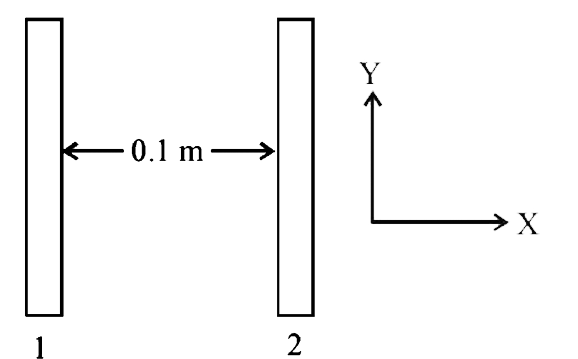In a typical lightning flash, the potential difference between discharge points is about 1.0×109V and the quantity of charge transferred I about 30 C. IF all the energy released could be used to accelerate a 1200 kg automobile from rest, what would be the final speed of the automobile ?
7100ms−1
3600ms−1
9500ms−1
6800ms−1
The correct Answer is:A
To solve the problem step by step, we will use the principles of energy conservation and the relationship between electric potential energy and kinetic energy.
Step 1: Calculate the energy released by the lightning flash
The energy (ΔU) released during the lightning flash can be calculated using the formula:
ΔU=Q⋅ΔV
Where:
- Q=30C (the quantity of charge transferred)
- ΔV=1.0×109V (the potential difference)
Substituting the values:
ΔU=30C⋅1.0×109V=30×109J
Step 2: Apply the conservation of energy
According to the conservation of energy, the energy transferred to the automobile will be converted into kinetic energy (KE). The kinetic energy of the automobile can be expressed as:
KE=12mv2
Where:
- m=1200kg (mass of the automobile)
- v is the final speed we want to find.
Setting the energy from the lightning equal to the kinetic energy of the automobile:
30×109J=12⋅1200kg⋅v2
Step 3: Solve for the final speed v
Rearranging the equation to solve for v2:
30×109=600⋅v2
Dividing both sides by 600:
v2=30×109600
Calculating the right-hand side:
v2=50×106=5×107
Now, taking the square root to find v:
v=√5×107≈7071.06m/s
Step 4: Final answer
Rounding the value, we find:
v≈7100m/s
Summary
The final speed of the automobile, if all the energy from the lightning flash is used to accelerate it, is approximately 7100 m/s.
---
The energy (ΔU) released during the lightning flash can be calculated using the formula:
- Q=30C (the quantity of charge transferred)
- ΔV=1.0×109V (the potential difference)
According to the conservation of energy, the energy transferred to the automobile will be converted into kinetic energy (KE). The kinetic energy of the automobile can be expressed as:
- m=1200kg (mass of the automobile)
- v is the final speed we want to find.
Rearranging the equation to solve for v2:
Rounding the value, we find:
The final speed of the automobile, if all the energy from the lightning flash is used to accelerate it, is approximately 7100 m/s.
Topper's Solved these Questions
- ELECTROSTATICSBOOK - MTG GUIDECHAPTER - ELECTROSTATICSEXERCISE - AIPMT/NEET (MCQ.s)
34 Videos
- ELECTROSTATICSBOOK - MTG GUIDECHAPTER - ELECTROSTATICSEXERCISE - NEET ITALS
1 Videos
- ELECTRONIC DEVICESBOOK - MTG GUIDECHAPTER - ELECTRONIC DEVICESEXERCISE - AIPMT/NEET (MCQs)
42 Videos
- MAGNETIC EFFECTS OF CURRENT AND MAGNETISMBOOK - MTG GUIDECHAPTER - MAGNETIC EFFECTS OF CURRENT AND MAGNETISMEXERCISE - AIPMT/NEET (MCQs)
48 Videos
Similar Questions
An electron , with charge of −1.60×1019C, accelerates from rest through a potential difference V. A proton , with a charge of +1.60×10−19C, accelerates from rest through a potential difference −V . Is the final speed of the electron (a) more than , (b) less than , or (c ) same as the final speed of the proton ?
View SolutionIn Fig. 27-9, what is the potential difference V.d−Vc between points d and c if ε1=4.0V.ε2−1.0V,R1=R2=10Ω,andR3=8.0Ω, and the battery is ideal?
View Solution
Knowledge Check
The potential difference between a cloud and the Earth is 107V. Calculate the amount of energy dissipated when the charge of 100C is transferred from the cloud to the ground due to lighting bolt.
AzeroB107JC109JD105JTwo insulting plates are both uniformly charged in such a way that the potential difference between them is V2−V1=20V. (i.e., plate 2 is at a higher potential). The plates are separated by d=0.1m and can be treated as infinity large. An electron is released from rest on the inner surface of plate 1. What is its speed when it hits plate 2? (e=1.6×10−19C, me=9.11×10−31kg)
 A(a) 2.65×106m/sB(b) 7.02×1012m/sC(c) 1.87×106m/sD(d) 32×10−19m/s
A(a) 2.65×106m/sB(b) 7.02×1012m/sC(c) 1.87×106m/sD(d) 32×10−19m/sIf 4×1020eV energy is required to move a charge of 0.25 coulomb between two points. Then what will be the potential difference between them ?
A178VB256VC356VDNone of these
If a lightning discharge lasts 1.4 ms and carries a current of 5.0×104 A through a potential difference of 2.4×109V. what is the change in the energy of the charge that is transferred by the discharge?
View SolutionTwo insulating plates, shown in the figure, are thi uniformly .charged in such a way that the potentia difference between them is V3−V1=20V (i.e., plate 2 is at a higher potential). The plates are separated by distanc d = 0.1 m and can be treated as infinitely large. Al clectron is roleased from rest on the inner surface of plate 1. Its speed when it hits plate 2 is 2.65×10nms Find n (q=1.6×10−19C,m0=9.11×10−11kg)
'(##CEN_KSR_PHY_JEE_CO19_E01_009_Q02##)' figure
View SolutionA point charge 20μC is shifted from infinity to a point P in an electric field with zero acceleration. If the potential of that point is 1000 volt, then
(i) Find out work done by electric field ?
(iii) If the kinetic energy of charge particle is found to increase by 10 mJ when it is brought from infinity to point P, then what is the total work done by external agent ?
(iv) What is the work done by electric field in the part (iii)
(v) If a point charge 30μC is released at rest at point P, then find out its kinetic energy at a large distance ?
View SolutionSomeone suggested using a 5,000 μF capacitor to generate flash for a camera. A capacitor is to charged slowly and completely up to a potential difference of 10V. At the time of generating flash, all stored energy of a capacitor is discharged through a discharge tube in such a manner that flash only time 100 μs to release the total energy of the capacitor. Calculate the power of camera flash.
View SolutionThe Velocity of electrons accelerated bt potential difference of 1×104V (the charge of the electron is 1.6×10−19C and mass is 9.11×10−31 kg) is
View Solution
